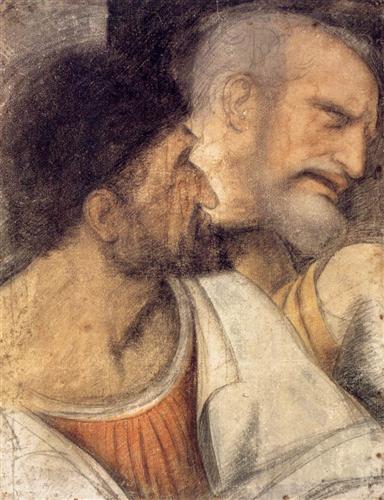Maundy Thursday, Good Friday and Holy Saturday, make up the 'Triduum Sacrum' ('the three holy days') that are the
culmination of Lent and Holy Week. The readings for these three days are
always the same, and like the traditional liturgies for which they are used, they invite us to
reflect on the events of the Last Supper, the Crucifixion,
and Christ's Sabbath rest in the tomb. These liturgical observances are the best possible preparation
for the great culmination of the Christian year -- the Easter Vigil and Easter Day.
MAUNDY THURSDAY
The word 'Maundy' is a corruption of the Latin mandatum novum, the 'new
commandment' that Jesus gives his disciples to 'love one another'. The
tradition of foot washing that takes place on this day is a symbolic expression
of obedience to that command, and a reflection of what happened in the Upper
Room. But the main focus is on the gift of the Eucharist, which is why Maundy
Thursday has a celebratory character that the other days of Holy Week lack.
GOOD FRIDAY
Good Friday is the only day of the year in which the Church
does not permit celebrations of the Eucharist to underline the
supreme giving of Christ's boy and blood that took place on the Cross. After the story of the
Crucifixion according to John is read, people are invited to express their veneration of the Cross in the physical
action of kneeling before it. They may then participate once more in the previous evening's Last Supper
by receiving communion from the elements consecrated on Maundy Thursday.
HOLY SATURDAY
- Job 14:1-14 or Lamentations 3:1-9, 19-24 •
- Psalm 31:1-4, 15-16 •
- 1 Peter 4:1-8 •
- Matthew 27:57-66 or John 19:38-42
A curiously empty day,
As if the world's life
Had gone underground.
The April sun
Warming the dry grass
Makes pale spring promises
But nothing comes to pass.
Anger
Relaxes into despair
As we remember our helplessness,
Remember him hanging there.
We have purchased the spices
But they must wait for tomorrow.
We shall keep today
For emptiness and sorrow. Elizabeth Rooney (1924-99)









